Pre-built actions
Pre-built actions are the most convenient option for integrating your workflow with an API. Pre-built actions can use your connected accounts to perform API requests, and are configured through props. Pre-built actions are the fastest way to get started building workflows, but they may not fit your use case if a prop is missing or is handling data in a way that doesn’t fit your needs. For example, to send a message using Slack just search for Slack and use the Send Message to a Public Channel action: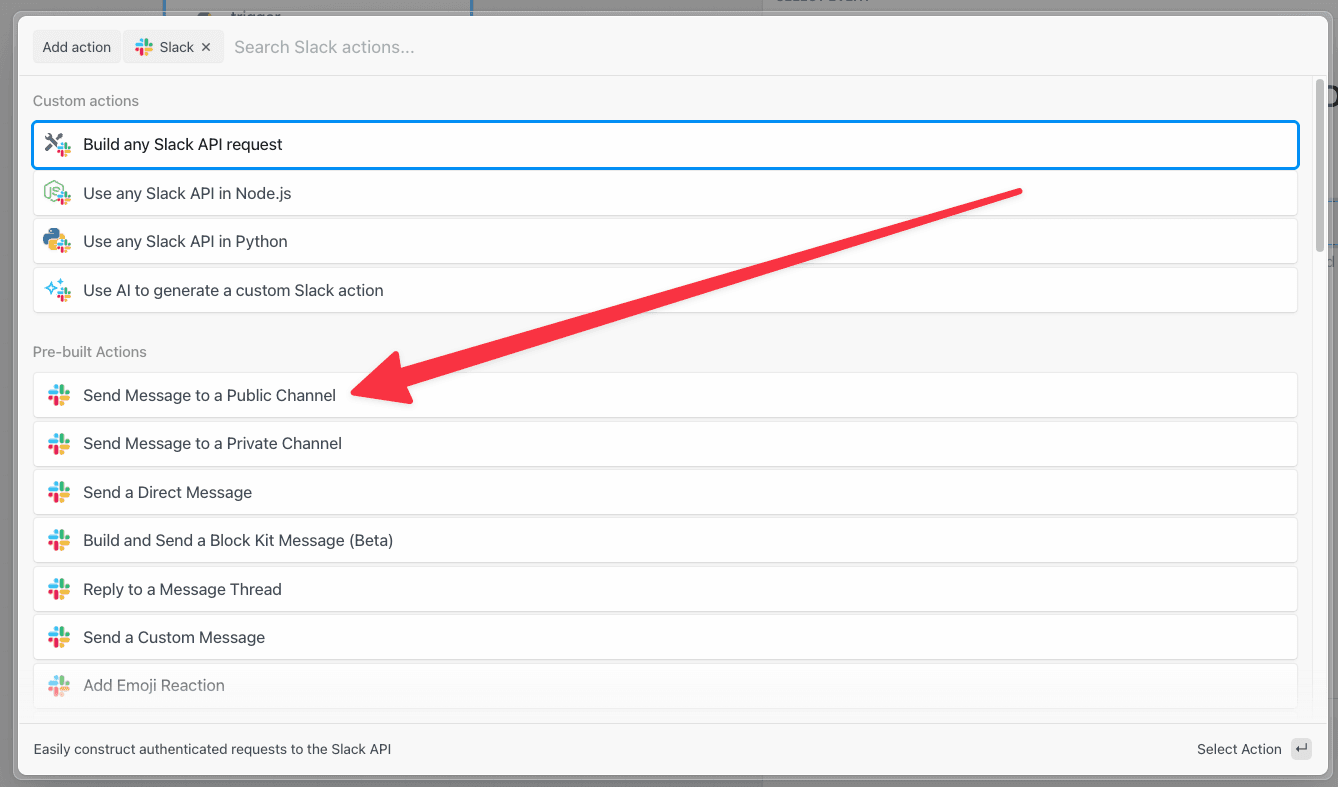
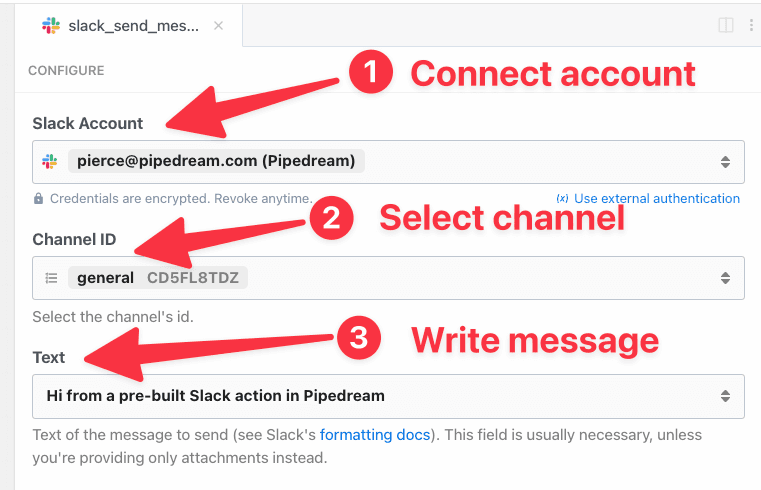
Pre-built actions are open sourceAll pre-built actions are published from the Pipedream Component Registry, so you can read and modify their source code. You can even publish your own from Node.js code steps privately to your own workspace.
HTTP Request Action
The HTTP request action is the next most convenient option. Use a Postman-like interface to configure an HTTP request - including the headers, body, and even connecting an account.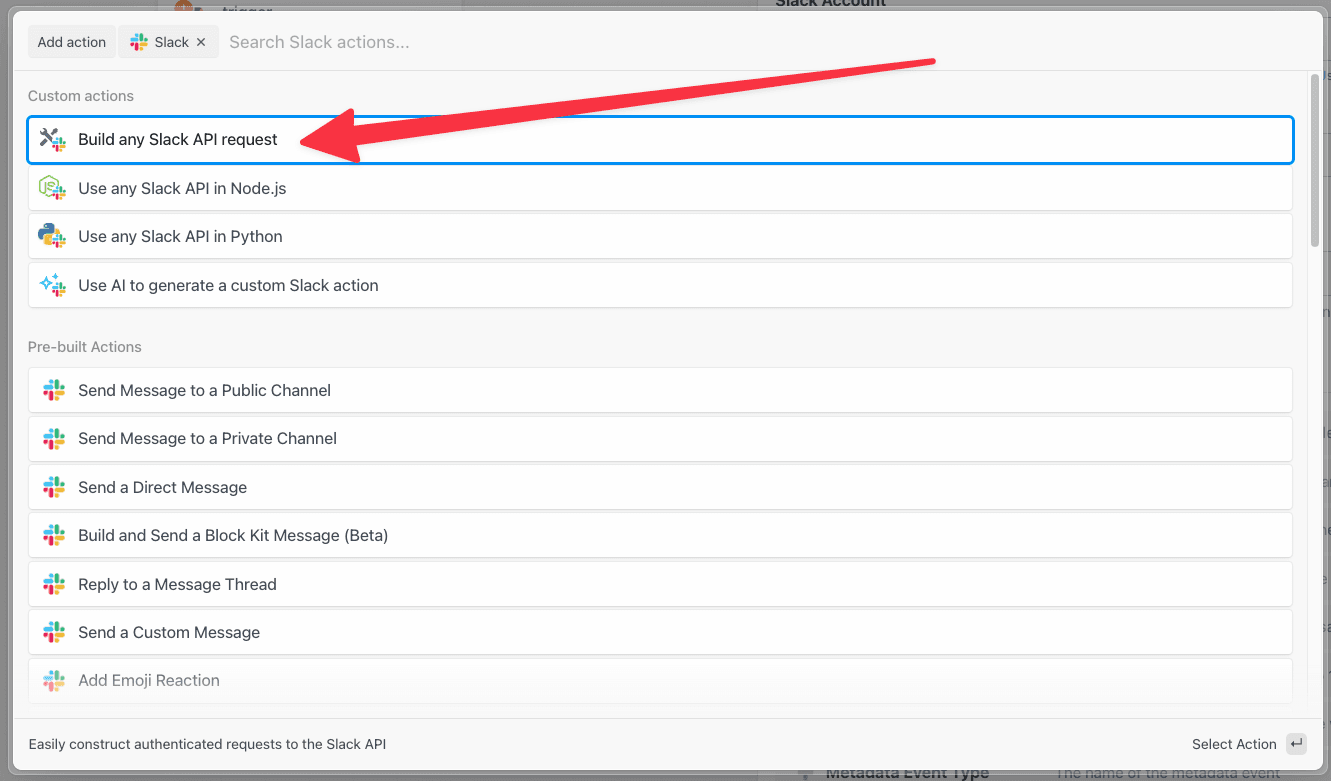
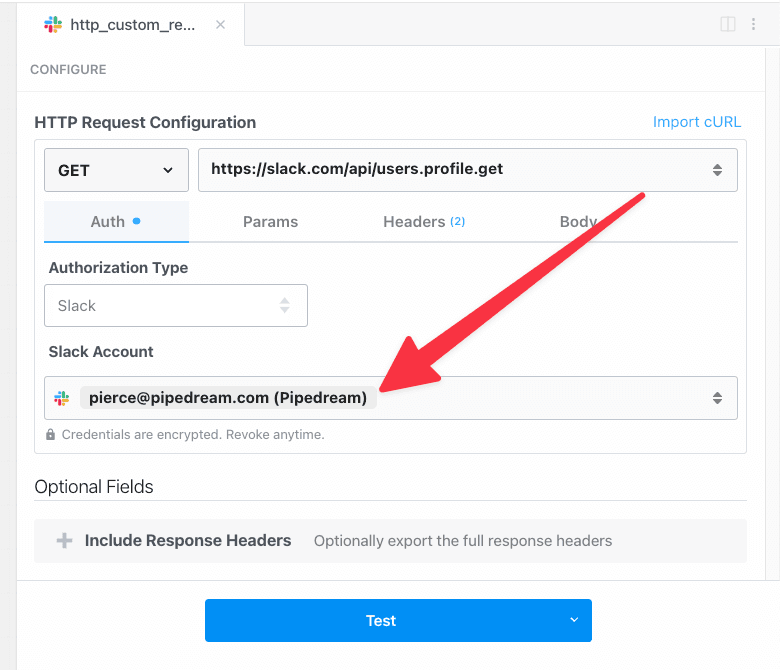
Authorization header. So Pipedream automatically configures this HTTP request to pass your token to that specific header:
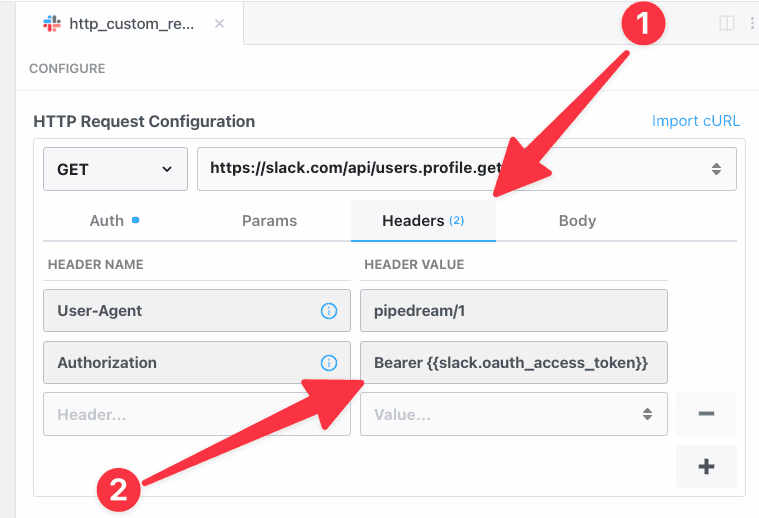
Adding apps to an HTTP request builder action
You can also attach apps to the Send any HTTP Request action from the action selection menu. After adding a new step to your workflow, select the Send any HTTP Request action: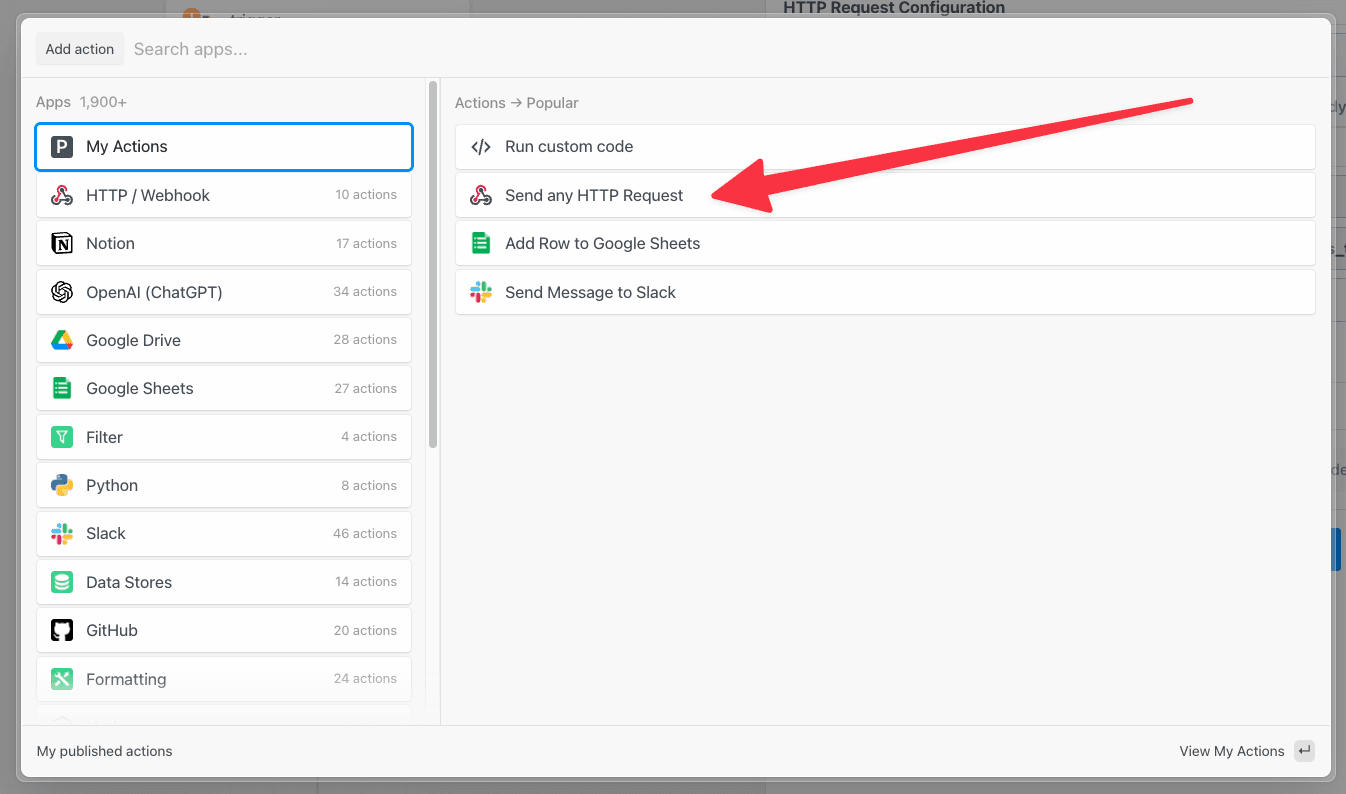
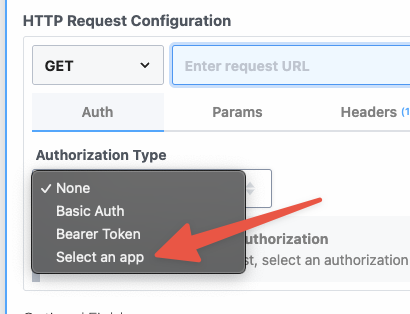
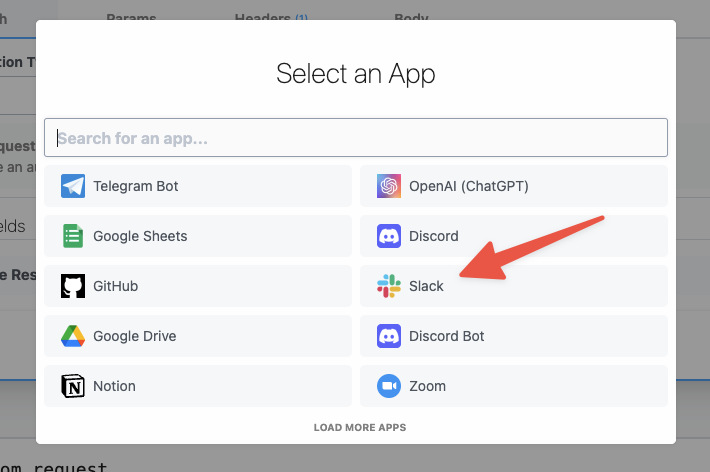
https://slack.com/api/chat.postMessage:
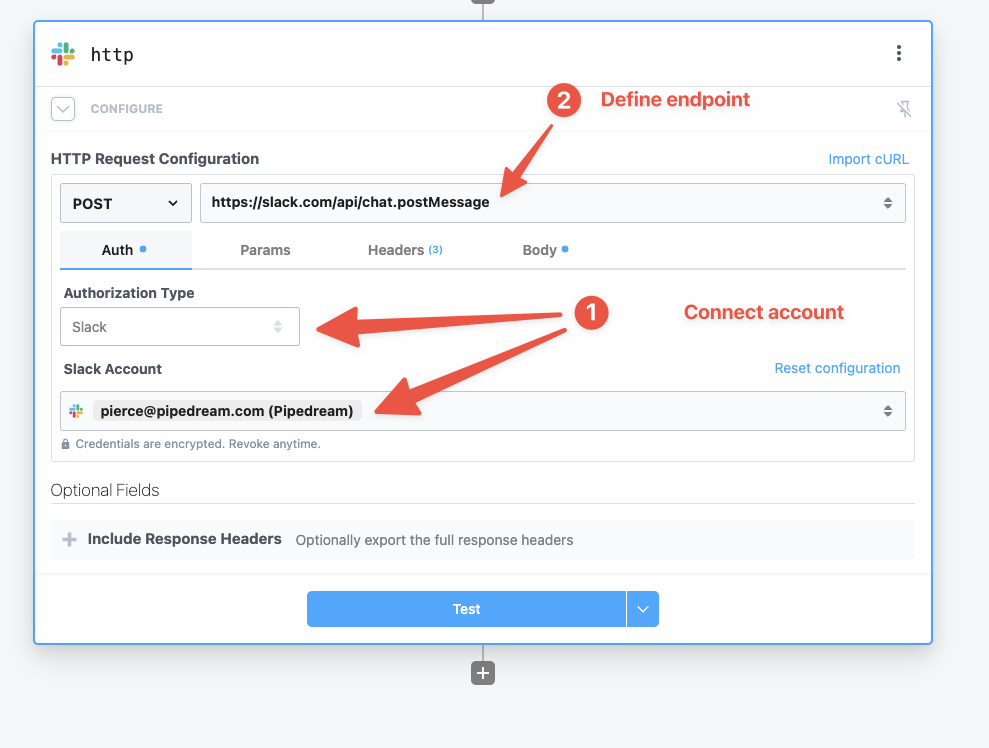
channel and message for the request:
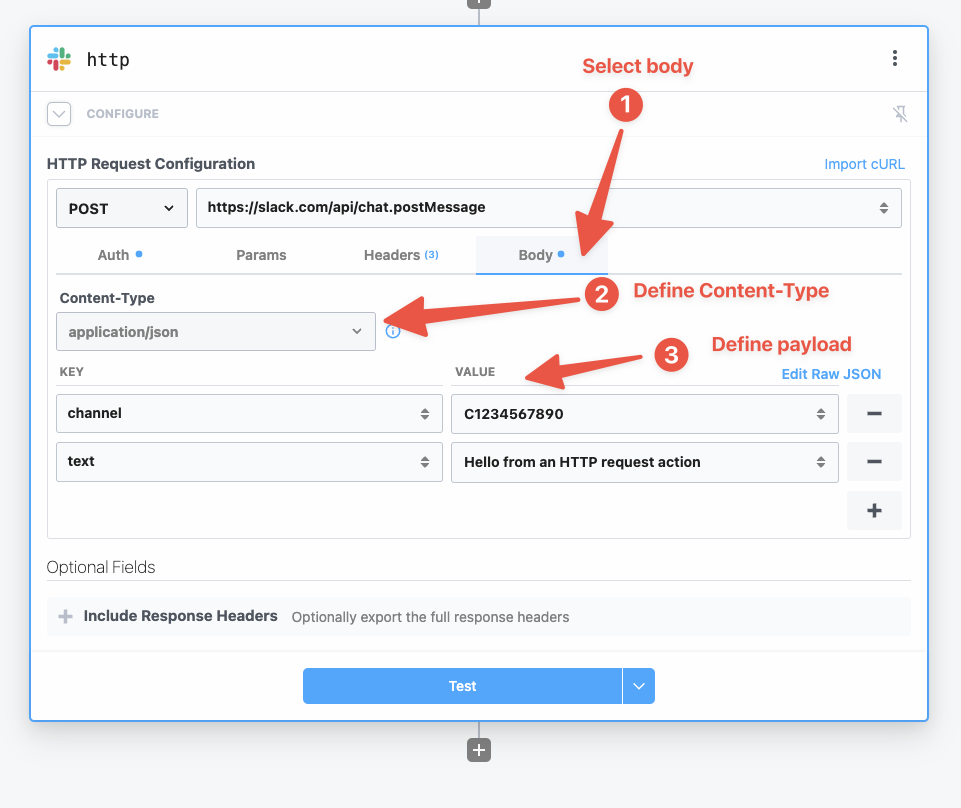
- Conditionally sending requests - The HTTP request action will always request, to send requests conditionally you’ll need to use code.
- Workflow execution halts - if an HTTP request fails, the entire workflow cancels
- Automatically retrying -
$.flow.retryisn’t available in the HTTP Request action to retry automatically if the request fails - Error handling - It’s not possible to set up a secondary action if an HTTP request fails.
HTTP Requests in code
When you need more control, use code. You can use your connected accounts with Node.js or Python code steps. This gives you the flexibility to catch errors, use retries, or send multiple API requests in a single step. First, connect your account to the code step:Conditionally sending an API Request
You may only want to send a Slack message on a certain condition, in this example we’ll only send a Slack message if the HTTP request triggering the workflow passes a special variable:steps.trigger.event.body.send_message
Error Handling
The other advantage of using code is handling error messages usingtry...catch blocks. In this example, we’ll only send a Slack message if another API request fails:
Subscribing to all errorsYou can use a subscription to subscribe a workflow to all errors through the
$errors channel, instead of handling each error individually.Automatically retrying an HTTP request
You can leverage$.flow.rerun within a try...catch block in order to retry a failed API request.
See the example in the $.flow.rerun docs for Node.js.
Platform axios
Why @pipedream/platform axios?
axios is an HTTP client for Node.js (see these docs for usage examples).
axios has a simple programming API and works well for most use cases. But its default error handling behavior isn’t easy to use. When you make an HTTP request and the server responds with an error code in the 4XX or 5XX range of status codes, axios returns this stack trace:

axios wrapper as a part of the @pipedream/platform package. This presents the same programming API as axios, but implements two helpful features:
- When the HTTP request succeeds (response code <
400), it returns only thedataproperty of the response object — the HTTP response body. This is typically what users want to see when they make an HTTP request:

- When the HTTP request fails (response code >=
400), it displays a detailed error message in the Pipedream UI (the HTTP response body), and returns the wholeaxiosresponse object so users can review details on the HTTP request and response:
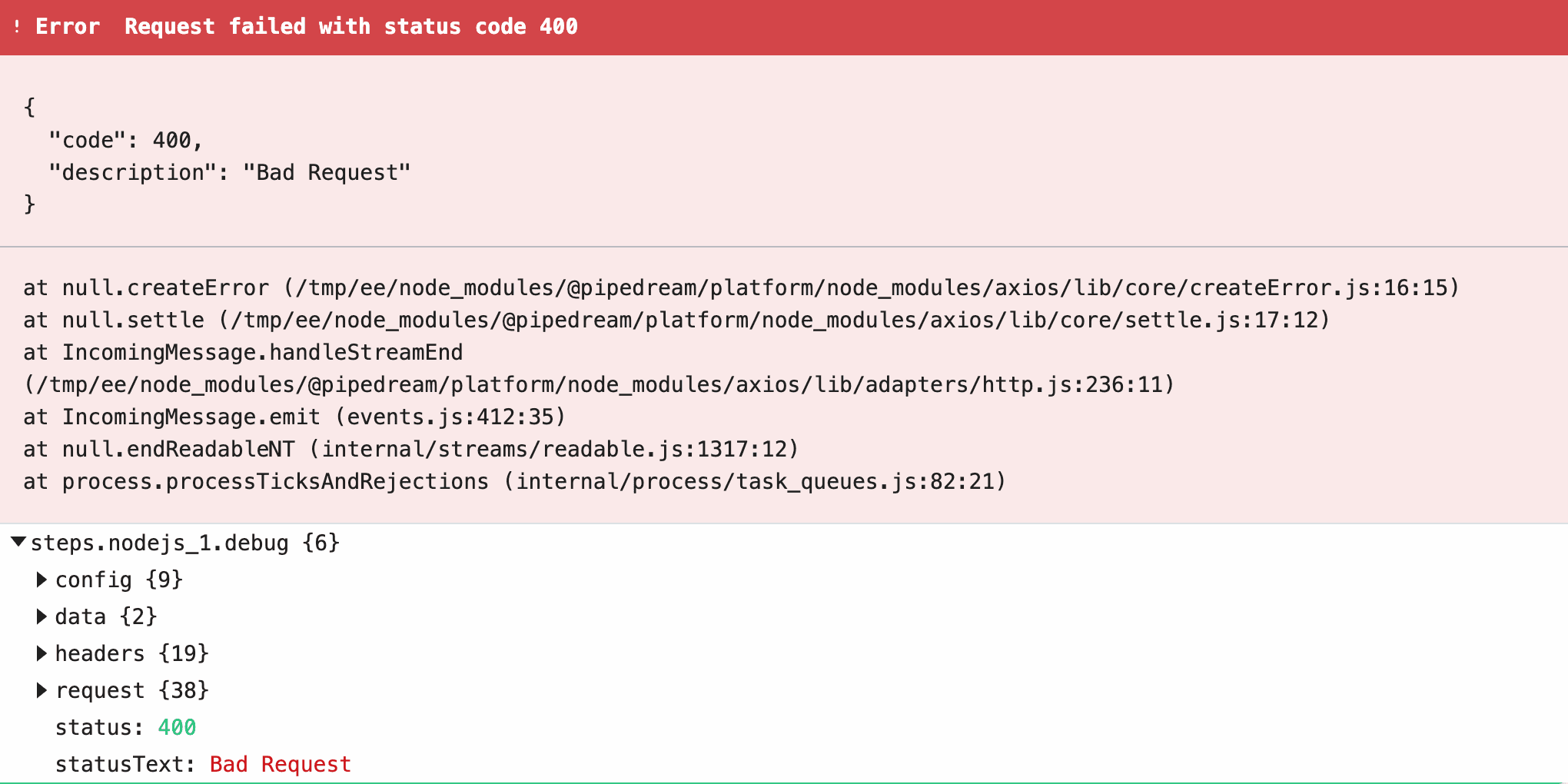
Using @pipedream/platform axios in component actions
To use @pipedream/platform axios in component actions, import it:
@pipedream/platform axios uses methods provided by the $ object, so you’ll need to pass that as the first argument to axios when making HTTP requests, and pass the standard axios request config as the second argument.
Here’s an example action: